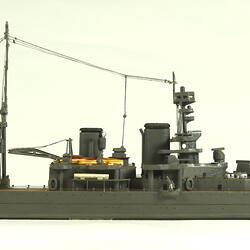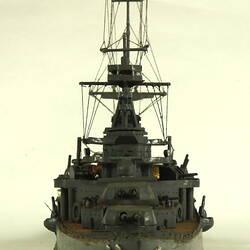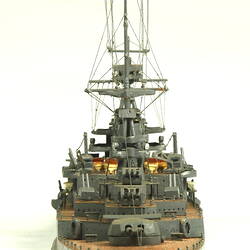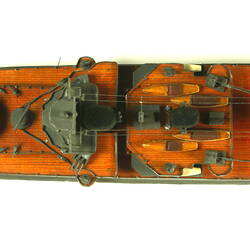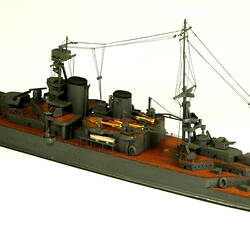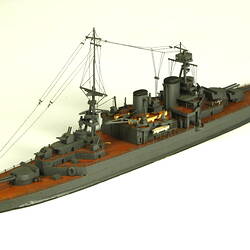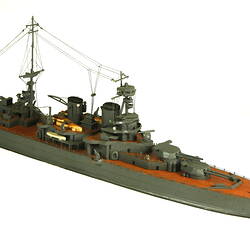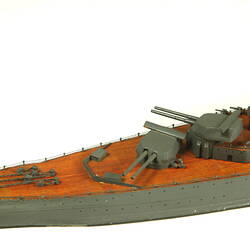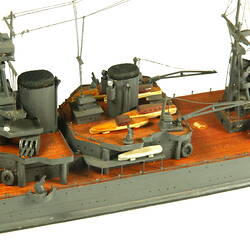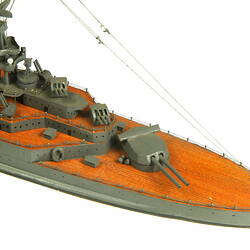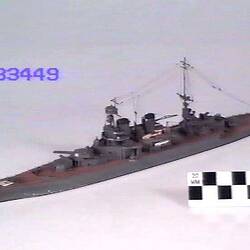Summary
Model of the Royal Navy Repulse class battlecruiser (32,000 tons) HMS Repulse. Built by John Brown & Co., Clydebank and launched in 1916, Repulse saw action during World War I as flagship of the 1st Battlecruiser Squadron of the Grand Fleet. On 17 November 1917 Repulse took part in the Second Battle of the Helgoland Bight firing on two German battleships. In December 1917 Repulse collided with the RAN battlecruiser HMAS Australia and was repaired and refitted during 1918. Between the wars Repulse was extensively modified. During World War II, Repulse served with the Home Fleet on patrol and escort duties including the Norwegian Campaign. In 1941, Repulse was one of the force hunting the German Battleship Bismarck but did not engage the enemy warship.
In late 1941, Repulse was attached to the Eastern Fleet and arrived at Singapore with the new battlecruiser HMS King George V. This reinforcement was intended to discourage a Japanese attack on Malaya but Japanese troops began landing at Kota Bharu on 8 December. The same day, both battlecruisers left Singapore to engage the Japanese invasion task force off the east coast of Malaya as Force Z commanded by Admiral Tom Phillips. The covering destroyer screen for Force Z included the Australian ship HMAS Vampire. On 10 December 1941 both ships were attacked by Japanese Imperial Navy G3M and G4M bombers operating from bases in Indochina (Vietnam). Within an hour both ships had been hit and crippled by numerous bomb and torpedo strikes. Survivors from both ships were rescued by destroyers HMS Electra and HMAS Vampire. Brewster Buffalo fighters of No. 453 Squadron RAAF arrived overhead too late to intercept the Japanese aircraft. This catastrophe removed the last significant opposition to Japanese naval domination of the Eastern and South-West Pacific. A Japanese salvage squad later removed parts of the radar equipment from the wreck of HMS Repulse. The Royal Navy maintains a white ensign on the mast of the wreck as a tribute to the 327 men of her crew who died on 10 December 1941.
This model was purchased by the Museum in 1941 from the modelmaker Mr E.J. Krummeck. It is one of a large collection of British and Australian naval ship models made by Krummeck.
More Information
-
Collecting Areas
-
Acquisition Information
Purchase
-
Modelmaker
E. J. Krummeck, 5 Euston Road, Hughesdale, Greater Melbourne, Victoria, Australia, circa 1941
-
User of Item Modelled
-
Classification
-
Category
-
Discipline
-
Type of item
-
Keywords
Naval Vessels, Ship Models, Warships, World War I, 1914-1918


